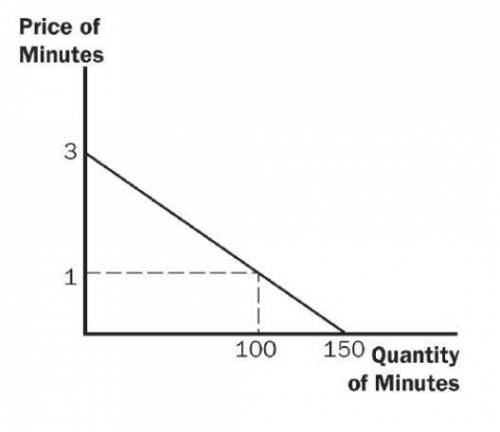
Business, 21.02.2020 05:11 anabelleacunamu
A friend of yours is considering two cell phone service providers. Provider A charges $120 per month for the service regardless of the number of phone calls made. Provider B does not have a fixed service fee but instead charges $1 per minute for calls. Your friend's monthly demand for minutes of calling is given by the equation QD=150−50PQD=150−50P , where PP is the price of a minute. a. With each providers, what is the cost to your friend of an extra minute on the phone?b. In light of your answer to (a), how many minutes would your friend talk on the phone with each provider?c. How much would he end up paying each provider every month?d. How much consumer surplus would he obtain with each provider? (Hint: Graph the demand curve and recall the formula for the area of a triangle.)e. Which provider would you recommend that your friend choose? Why?

Answers: 3
Another question on Business

Business, 21.06.2019 22:40
wilson's has 10,000 shares of common stock outstanding at a market price of $35 a share. the firm also has a bond issue outstanding with a total face value of $250,000 which is selling for 102 percent of face value. the cost of equity is 11 percent while the preminustax cost of debt is 8 percent. the firm has a beta of 1.1 and a tax rate of 34 percent. what is wilson's weighted average cost of capital?
Answers: 3

Business, 22.06.2019 09:00
Harry is 25 years old with a 1.55 rating factor for his auto insurance. if his annual base premium is $1,012, what is his total premium? $1,568.60 $2,530 $1,582.55 $1,842.25
Answers: 3

Business, 22.06.2019 10:10
Ursus, inc., is considering a project that would have a five-year life and would require a $1,650,000 investment in equipment. at the end of five years, the project would terminate and the equipment would have no salvage value. the project would provide net operating income each year as follows (ignore income taxes.):
Answers: 1

Business, 22.06.2019 11:00
T-comm makes a variety of products. it is organized in two divisions, north and south. the managers for each division are paid, in part, based on the financial performance of their divisions. the south division normally sells to outside customers but, on occasion, also sells to the north division. when it does, corporate policy states that the price must be cost plus 20 percent to ensure a "fair" return to the selling division. south received an order from north for 300 units. south's planned output for the year had been 1,200 units before north's order. south's capacity is 1,500 units per year. the costs for producing those 1,200 units follow
Answers: 1
You know the right answer?
A friend of yours is considering two cell phone service providers. Provider A charges $120 per month...
Questions




Mathematics, 04.05.2021 23:40


Mathematics, 04.05.2021 23:40


Mathematics, 04.05.2021 23:40

Mathematics, 04.05.2021 23:40

History, 04.05.2021 23:40

Chemistry, 04.05.2021 23:40

History, 04.05.2021 23:40

Mathematics, 04.05.2021 23:40





Biology, 04.05.2021 23:40

Mathematics, 04.05.2021 23:40

Mathematics, 04.05.2021 23:40




